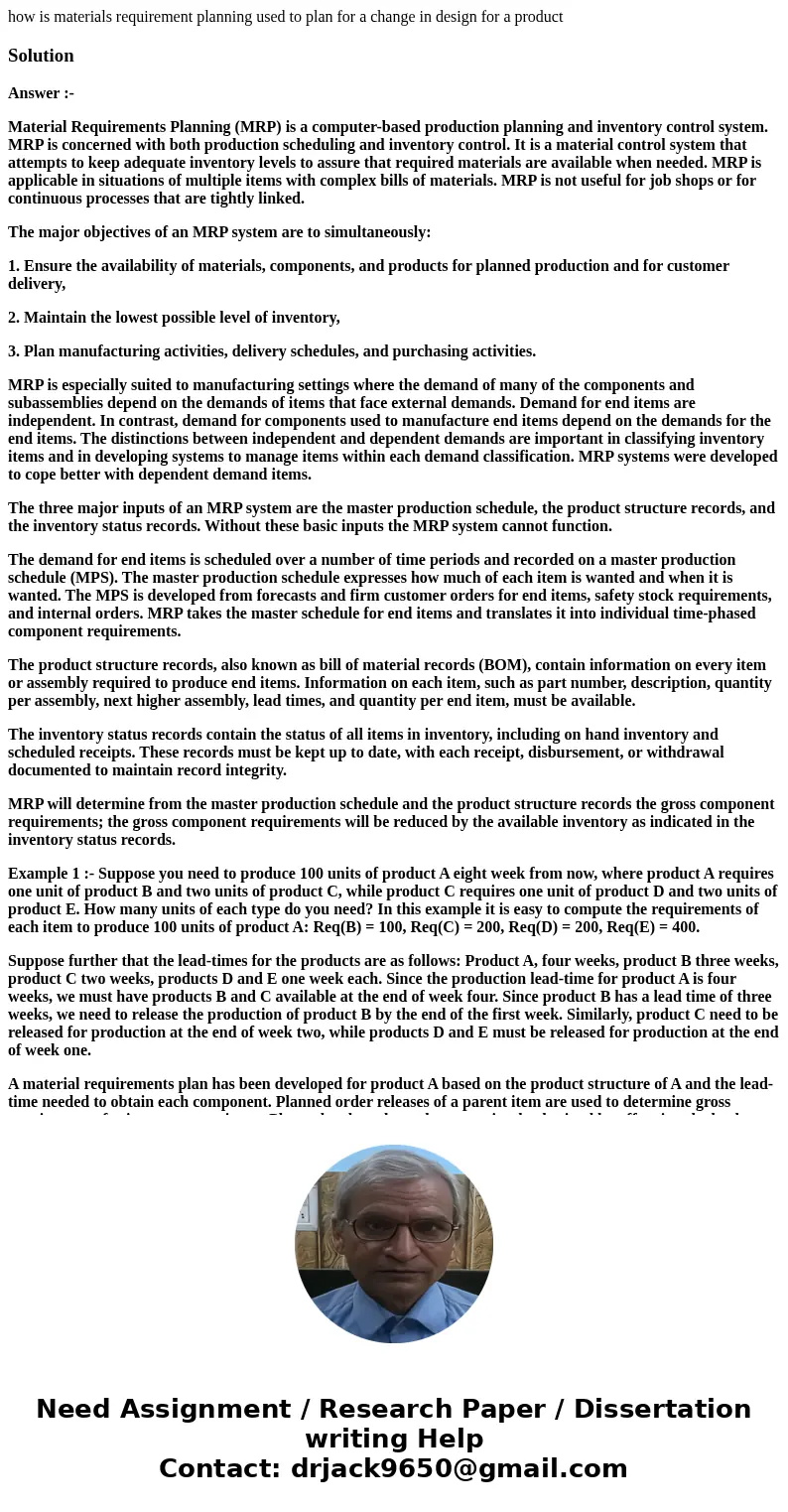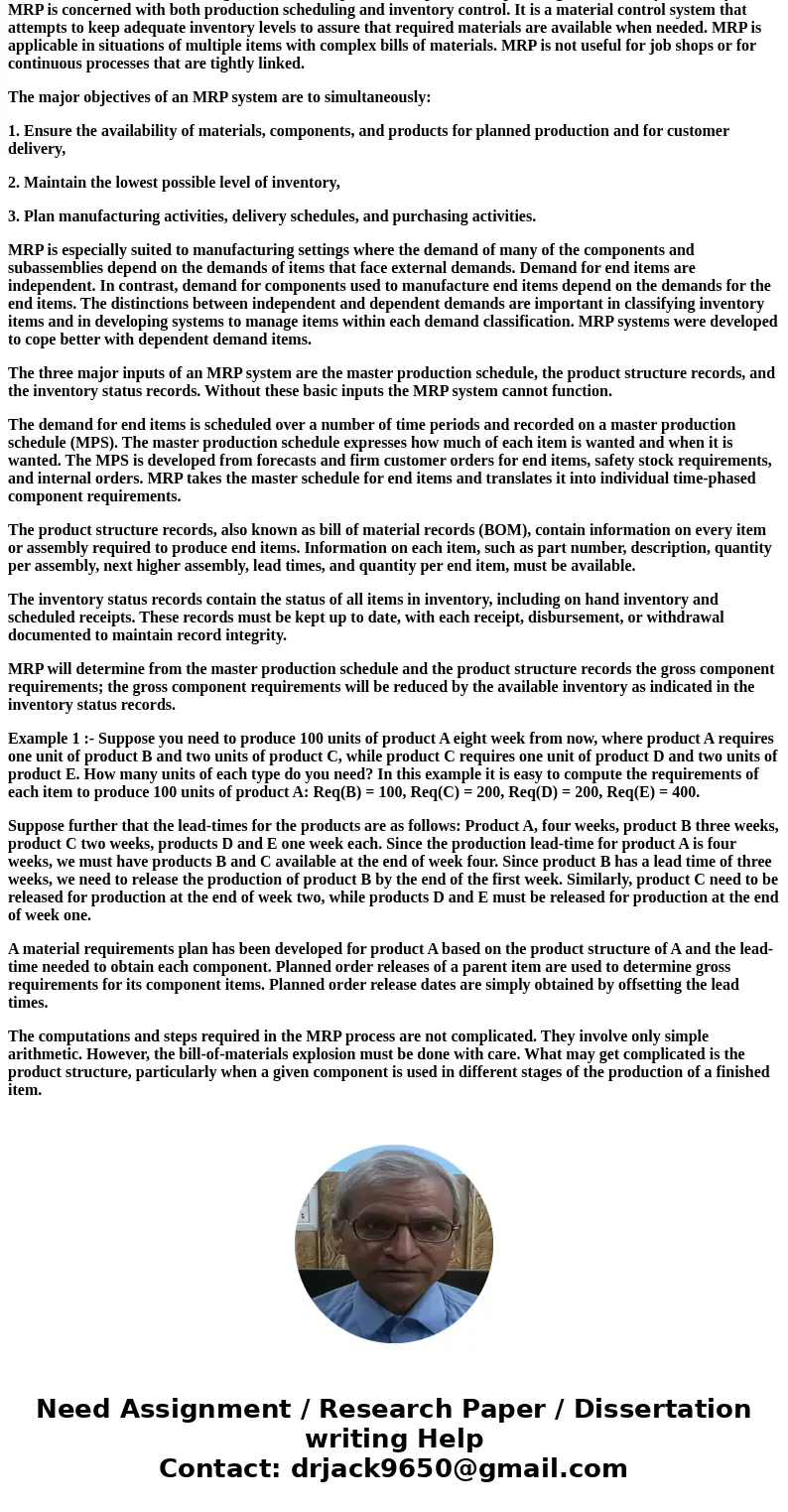how is materials requirement planning used to plan for a cha
how is materials requirement planning used to plan for a change in design for a product
Solution
Answer :-
Material Requirements Planning (MRP) is a computer-based production planning and inventory control system. MRP is concerned with both production scheduling and inventory control. It is a material control system that attempts to keep adequate inventory levels to assure that required materials are available when needed. MRP is applicable in situations of multiple items with complex bills of materials. MRP is not useful for job shops or for continuous processes that are tightly linked.
The major objectives of an MRP system are to simultaneously:
1. Ensure the availability of materials, components, and products for planned production and for customer delivery,
2. Maintain the lowest possible level of inventory,
3. Plan manufacturing activities, delivery schedules, and purchasing activities.
MRP is especially suited to manufacturing settings where the demand of many of the components and subassemblies depend on the demands of items that face external demands. Demand for end items are independent. In contrast, demand for components used to manufacture end items depend on the demands for the end items. The distinctions between independent and dependent demands are important in classifying inventory items and in developing systems to manage items within each demand classification. MRP systems were developed to cope better with dependent demand items.
The three major inputs of an MRP system are the master production schedule, the product structure records, and the inventory status records. Without these basic inputs the MRP system cannot function.
The demand for end items is scheduled over a number of time periods and recorded on a master production schedule (MPS). The master production schedule expresses how much of each item is wanted and when it is wanted. The MPS is developed from forecasts and firm customer orders for end items, safety stock requirements, and internal orders. MRP takes the master schedule for end items and translates it into individual time-phased component requirements.
The product structure records, also known as bill of material records (BOM), contain information on every item or assembly required to produce end items. Information on each item, such as part number, description, quantity per assembly, next higher assembly, lead times, and quantity per end item, must be available.
The inventory status records contain the status of all items in inventory, including on hand inventory and scheduled receipts. These records must be kept up to date, with each receipt, disbursement, or withdrawal documented to maintain record integrity.
MRP will determine from the master production schedule and the product structure records the gross component requirements; the gross component requirements will be reduced by the available inventory as indicated in the inventory status records.
Example 1 :- Suppose you need to produce 100 units of product A eight week from now, where product A requires one unit of product B and two units of product C, while product C requires one unit of product D and two units of product E. How many units of each type do you need? In this example it is easy to compute the requirements of each item to produce 100 units of product A: Req(B) = 100, Req(C) = 200, Req(D) = 200, Req(E) = 400.
Suppose further that the lead-times for the products are as follows: Product A, four weeks, product B three weeks, product C two weeks, products D and E one week each. Since the production lead-time for product A is four weeks, we must have products B and C available at the end of week four. Since product B has a lead time of three weeks, we need to release the production of product B by the end of the first week. Similarly, product C need to be released for production at the end of week two, while products D and E must be released for production at the end of week one.
A material requirements plan has been developed for product A based on the product structure of A and the lead-time needed to obtain each component. Planned order releases of a parent item are used to determine gross requirements for its component items. Planned order release dates are simply obtained by offsetting the lead times.
The computations and steps required in the MRP process are not complicated. They involve only simple arithmetic. However, the bill-of-materials explosion must be done with care. What may get complicated is the product structure, particularly when a given component is used in different stages of the production of a finished item.


 Homework Sourse
Homework Sourse